Bullying Presents Ongoing Danger; Efforts to Educate Intensify As Incidents Continue
/
"From a young age, we teach children to say, 'Sticks and stones will break my bones, but names will never hurt me.' But this isn't true. Bullying hurts so much not because one individual is rejecting us but because we tend to believe that the bully speaks for others that if we are being singled out by the bully, then we are probably unliked and unwanted by most. Otherwise, why would all those others watch the bully tease us rather than stepping in to help support us? Absence of support is taken as a sign of mass rejection.”
That observation, in Social: Why Our Brains Are Wired to Connect, a new book by Matthew D. Lieberman, Director of the UCLA Social Cognitive Neuroscience laboratory,  published by Random House, provides insight into why bullying has such dramatic impacts, including incidents in Connecticut.
published by Random House, provides insight into why bullying has such dramatic impacts, including incidents in Connecticut.
A Hartford Courant review of state education records, published this fall, found more than 1,250 incidents of school bullying were reported to the state from 2005 to 2012. The state's largest cities — Hartford, Bridgeport and New Haven — reported the most incidents, with Hartford reporting 91 verified incidents.
A quarter of the state's high school students — and 35 percent of the state's ninth-graders — report having been bullied or harassed on school property, according to the state Commission on Children. The Connecticut School Health Survey shows that state high school students who report being bullied are more likely to get less sleep, miss school because they feel unsafe, feel depressed, or attempt suicide, the Courant reported.
New Recommendations Anticipated
The state Department of Education plans to make a series of recommendations to the 2014 General Assembly “to address current conditions in Connecticut.” Those recommendations may include an examination of the terminology regarding bullying and climate in an attempt to signal increased and focused attention on improving school climate in addition to, or rather than, exclusively reacting to bullying incidents, as well as addressing the relationship between the definitions of bullying and harassment and the implications for actions that the district or state should take regarding reported incidents.
The Department prepared “Bullying and Harassment in Connecticut: A Guide for Parents and Guardians” a year ago, in December2012.
Programs Respond and Teach
The Anti-Defamation League (ADL) is one of the leading organizations providing information and training for individuals who work with students on a daily basis, and anti-bias and anti-bullying programs for students ranging in age from fourth grade through seniors in high school. Such programs include “Names Can Really Hurt Us,” “Step Up!” and “Becoming an Ally.” The Connecticut ADL hosted two parent workshops in Greenwich this fall, just weeks after a 15-year-old Greenwich student took his own life on the first day of school this fall, and friends said bullying may have been a factor in the death.
The programs, which had been planned since the spring, sought to give parents strategies for bullying prevention and intervention. As part of the program, Greenwich High School students who had been trained by ADL talked to those in attendance about their experiences with bullying and cyber-bullying, Greenw ich Time reported. “We offered strategies and resources that the parents found very valuable. It was a unique opportunity for parents and high school students to have an open and honest dialogue about bullying and cyber-bullying issues that face today’s youth,” said Marji Lipshez-Shapiro, ADL Connecticut’s Director of Education.
ich Time reported. “We offered strategies and resources that the parents found very valuable. It was a unique opportunity for parents and high school students to have an open and honest dialogue about bullying and cyber-bullying issues that face today’s youth,” said Marji Lipshez-Shapiro, ADL Connecticut’s Director of Education.
The ADL programs explore stereotyping, prejudice, discrimination and scapegoating through the lens of students' experiences, and include student testimony, skits, videos and discussion groups. The ADL’s Names Can Really Hurt Us is described as a powerful, student-centered assembly program designed to give a voice to the targets of bullying and prejudice, build empathy in the perpetrators and inspire bystanders to become allies. ADL works with a team of students and school staff who participate in six hours of training and assist ADL in putting on a full-day program consisting of a morning assembly, break-out groups and a closing assembly. During the morning assembly, student participants share their personal experiences with bullying, name-calling and prejudice in a safe forum. Students then participate in small group discussions led by student-teacher teams. The program culminates with a report of “next step” ideas, generated by students, to help create a welcoming and supportive school community.
Incidents Continue Despite Law
Stamford police arrested a 12-year-old girl and charged her with disorderly conduct for bullying another girl this fall. Police said an investigation began in September when the target's parents contacted police and said another student had repeatedly bullied the 13-year-old at school. When the bullying worsened and the targeted girl made comments about committing suicide, police said they immediately got involved. School administrators in Manchester last month suspended four Manchester High School students suspected of creating and posting degrading descriptions of female students, The Hartford Courant reported.
they immediately got involved. School administrators in Manchester last month suspended four Manchester High School students suspected of creating and posting degrading descriptions of female students, The Hartford Courant reported.
In Connecticut, the state legislature unanimously passed an anti-bullying law in 2011 that speeds school response, expands staff training, makes all school employees mandated reporters of bullying, addresses cyber bullying and launches statewide school climate assessments. Under the state legislation, schools must report acts of bullying to the state. The state's definition of bullying includes "the repeated use by one or more students of communication, a gesture or a physical act directed at or referring to another student in the same district that causes physical or emotional harm or fear of such harm."
A 2011 U.S. Department of Justice survey shows that 54 percent of Asian-American teenagers, 38.4 percent of black students and 34.3 percent of Hispanics reported being bullied in the classroom. The survey found that 31.3 percent of white students reported being bullied.
In September, Michelle Pincince, Project Director of the Connecticut ADL’s A World of Difference Institute met with about 25 school resource officers from throughout Connecticut. The program, which took place at Redding Elementary School, was organized by Redding Police Chief Doug Fuchs, according to published reports. A school resource officer is a law enforcement officer who is assigned to a school in his town, and who protects the students in the school and works to promote positive relationships between students and law enforcement. ADL runs 200 education programs and reaches over 20,000 individuals in Connecticut annually. Since the school year began this fall, 31 Connecticut schools have participated in ADL programs.



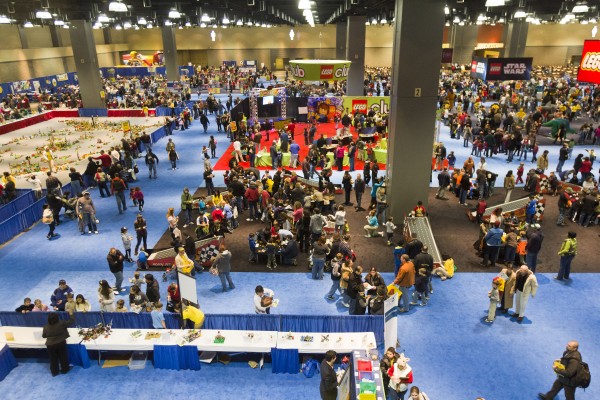 At each tour stop, the LEGO KidsFest partners with national and local organizations and businesses whose products, services and promotional efforts are kid-friendly and beneficial to attendees. Next year, the tour will again run in seven cities:
At each tour stop, the LEGO KidsFest partners with national and local organizations and businesses whose products, services and promotional efforts are kid-friendly and beneficial to attendees. Next year, the tour will again run in seven cities: 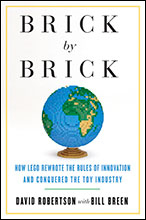 ades, outlines the company’s trials, tribulations (including near-bankruptcy in 2003), innovations and success, observing that “The LEGO Group’s leaders believe that to discover the next big growth opportunity, the company must adhere to a fundamental truth about innovation: the more experiments you launch, the more likely it is that one will strike gold.” KIdsFest is but one example.
ades, outlines the company’s trials, tribulations (including near-bankruptcy in 2003), innovations and success, observing that “The LEGO Group’s leaders believe that to discover the next big growth opportunity, the company must adhere to a fundamental truth about innovation: the more experiments you launch, the more likely it is that one will strike gold.” KIdsFest is but one example.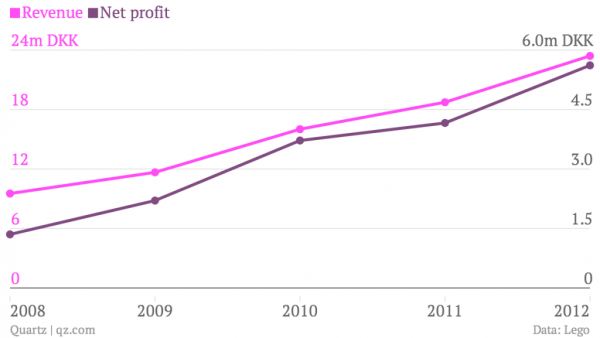 Last month, it was
Last month, it was 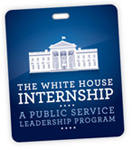 . Those attending school in the state: are Wesleyan student Samantha Jacobson of Needham, MA, Yale undergraduates Gabriel Perlman of New York, Reid Magdanz of Alaska and Jon Morgan of South Africa, and Yale Law School student Giselle Barcia of Miami, FL, Business New Haven reported.
. Those attending school in the state: are Wesleyan student Samantha Jacobson of Needham, MA, Yale undergraduates Gabriel Perlman of New York, Reid Magdanz of Alaska and Jon Morgan of South Africa, and Yale Law School student Giselle Barcia of Miami, FL, Business New Haven reported.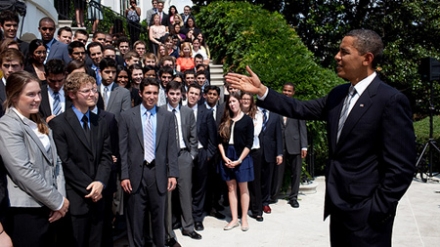 nternship experience includes an emphasis on service and interns participate in regularly scheduled service projects at schools and non-profit organizations in Washington, D.C.
nternship experience includes an emphasis on service and interns participate in regularly scheduled service projects at schools and non-profit organizations in Washington, D.C. Internship Program is now open. The deadline is January 4, 2014.
Internship Program is now open. The deadline is January 4, 2014. t the program focus on learning about one’s own leadership personality, participatory decision- making, effective group dynamics and leadership practices, including change leadership. The field experiences allow participants to meet the area’s key players and organizations, better understand the region’s assets and challenges, and gain a greater understanding of creative problem solving while leveraging limited resources.
t the program focus on learning about one’s own leadership personality, participatory decision- making, effective group dynamics and leadership practices, including change leadership. The field experiences allow participants to meet the area’s key players and organizations, better understand the region’s assets and challenges, and gain a greater understanding of creative problem solving while leveraging limited resources.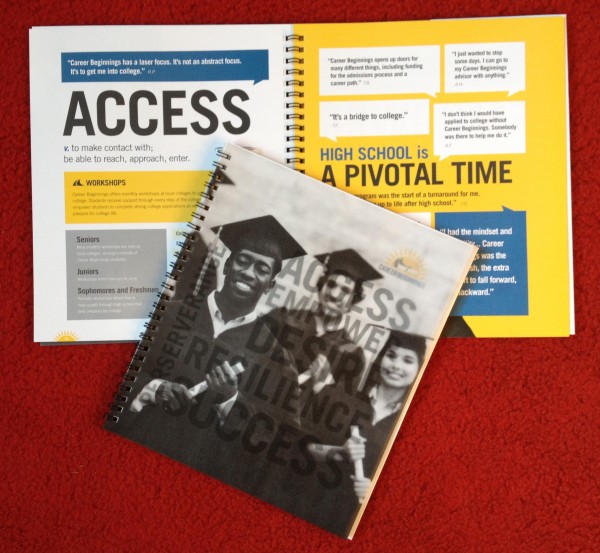 Consortium for Higher Education (HCHE) to create a media device that would tell the story of the Career Beginnings program, which connects Hartford-area high schools, businesses, volunteers/mentors and parents in a coordinated effort to increase the percentage of Hartford teenagers who graduate from high school, pursue higher education and fulfill career goals.
Consortium for Higher Education (HCHE) to create a media device that would tell the story of the Career Beginnings program, which connects Hartford-area high schools, businesses, volunteers/mentors and parents in a coordinated effort to increase the percentage of Hartford teenagers who graduate from high school, pursue higher education and fulfill career goals.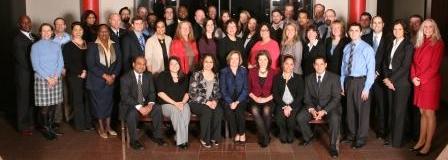 ).
). ts from the U.S. and beyond will exchange knowledge about voluntary action, nonprofit organizations, and philanthropy – and Connecticut will be well represented among participants. David Nee, representing the Connecticut Data Collaborative and Terry Edelstein, nonprofit liaison to the Governor will be among the panelists for a plenary session of the Conference. Among those attending the national conference close to home are Kyle Barrette (UConn), Mary Bernstein (UConn), Ron Cretaro (Connecticut Association for Nonprofits), Robert Fisher (UConn), Richard Frieder (Hartford Public Library), Maggie Gunther Osborn (Connecticut Council for Philanthropy), Reinaldo Rojas (UConn), Homa Naficy (Hartford Public Library), Nmarasimhan Srinivasan (UConn), Rebecca Thomas (UConn) and Jun Yan (UConn).
ts from the U.S. and beyond will exchange knowledge about voluntary action, nonprofit organizations, and philanthropy – and Connecticut will be well represented among participants. David Nee, representing the Connecticut Data Collaborative and Terry Edelstein, nonprofit liaison to the Governor will be among the panelists for a plenary session of the Conference. Among those attending the national conference close to home are Kyle Barrette (UConn), Mary Bernstein (UConn), Ron Cretaro (Connecticut Association for Nonprofits), Robert Fisher (UConn), Richard Frieder (Hartford Public Library), Maggie Gunther Osborn (Connecticut Council for Philanthropy), Reinaldo Rojas (UConn), Homa Naficy (Hartford Public Library), Nmarasimhan Srinivasan (UConn), Rebecca Thomas (UConn) and Jun Yan (UConn). d all aspects of civil society, as well as to meet the needs of those who study and lead “the social sector.”
d all aspects of civil society, as well as to meet the needs of those who study and lead “the social sector.”  hool for being sick, Fraser recalls, was simply not an option.
hool for being sick, Fraser recalls, was simply not an option. Innovative Idea
Innovative Idea Building A Business
Building A Business
 ts of both political parties into mayoral offices in cities and towns across the landscape?
ts of both political parties into mayoral offices in cities and towns across the landscape? tors frequently confronted devastating epidemics that wiped out many of the members of their groups; at such times, having a healthy leader might have been particularly important,” they wrote recently in
tors frequently confronted devastating epidemics that wiped out many of the members of their groups; at such times, having a healthy leader might have been particularly important,” they wrote recently in 

 ce organizations across the country that deal with issues such as health, housing, education, career development, and family support. When veterans return home, they face vast and complex challenges. According to the Department of Defense, the military suicide rate hit a record high in 2012, increasing nearly 16 percent over the previous year. Over 60,000 veterans are homeless. The unemployment rate for Gulf War-era veterans was 9.9 percent in 2012, compared to 8 percent for all Americans.
ce organizations across the country that deal with issues such as health, housing, education, career development, and family support. When veterans return home, they face vast and complex challenges. According to the Department of Defense, the military suicide rate hit a record high in 2012, increasing nearly 16 percent over the previous year. Over 60,000 veterans are homeless. The unemployment rate for Gulf War-era veterans was 9.9 percent in 2012, compared to 8 percent for all Americans. and others involved in software development, including graphic designers, interface designers and project managers, collaborate intensively on software projects.
and others involved in software development, including graphic designers, interface designers and project managers, collaborate intensively on software projects.
 e talented entrant. HTSQL is a Prometheus product.
e talented entrant. HTSQL is a Prometheus product.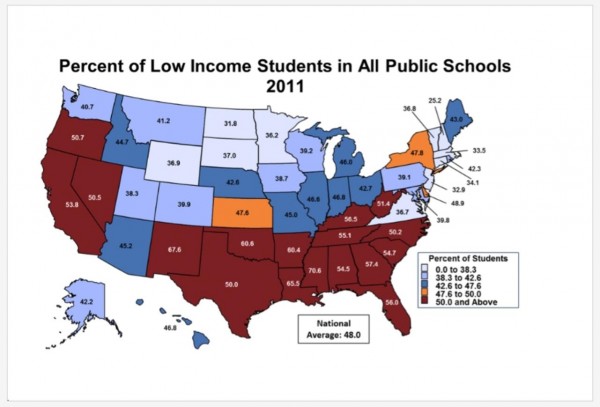 public schools moved from 38 percent of all students in 2001 to 48 percent in 2011.”
public schools moved from 38 percent of all students in 2001 to 48 percent in 2011.” st and 40 percent in the Northeast. The national average was 48 percent. As the report pointed out, “in 2011 the nation stood within only two percentage points of enrolling a majority of low income students in public schools across 50 states.”
st and 40 percent in the Northeast. The national average was 48 percent. As the report pointed out, “in 2011 the nation stood within only two percentage points of enrolling a majority of low income students in public schools across 50 states.”
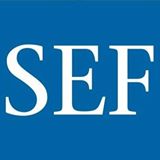 ceed in public schools? It is a question of how, not where, to improve the education of a new majority of students.”
ceed in public schools? It is a question of how, not where, to improve the education of a new majority of students.”


























